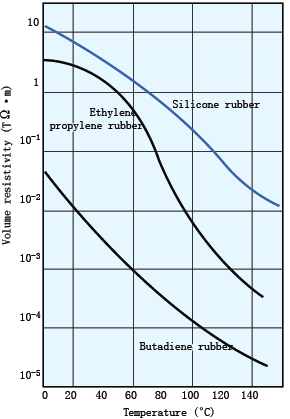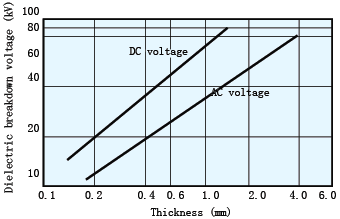 |
| |
| Silicone rubber thickness and Dielectric breakdown volutage |
| (Temperature: 23∑C. Based on JIS K 6249) |
 |
| |
| Arc resistance |
Tracking resistance |
material |
ASTM method sec |
Fabric based phenol resin |
4.5 |
Chlorosulphonated polyethylene |
5.2 |
Butyl rubber |
72 |
High butyl rubber over |
180 |
Chloroprene rubber |
8.5 |
Epoxy resin |
184 |
Polyester resin |
134 |
Polytetrafluoroethylene (PTFE) |
165-185 |
Silicone rubber over |
180 |
|
material |
ASTM method sec |
Fabric based phenol resin |
4.5 |
Chlorosulphonated polyethylene |
5.2 |
Butyl rubber |
72 |
High butyl rubber over |
180 |
Chloroprene rubber |
8.5 |
Epoxy resin |
184 |
Polyester resin |
134 |
Polytetrafluoroethylene (PTFE) |
165-185 |
Silicone rubber over |
180 |
|
| |
KA-3C Over 101 drops, less than 1 mm erosion
KA-2 Conduction path forms at 11-100 drops |
| Corona resistance |
material |
Operating life at 3kv h |
pOlyethylene |
24.0 |
Polytetrafluoroethylene(PTFE) |
33.5 |
cetatecairt esolulle |
36.5 |
Polytetrafluoroethylene (PET) |
50.0 |
polyester vam ish |
22.0 |
oilm odified phenolresin |
55.0 |
Epoxy ester Vam ish |
65.5 |
Asphalt vam ish |
81.0 |
Silicone rubber |
oVER 35,600 |
|